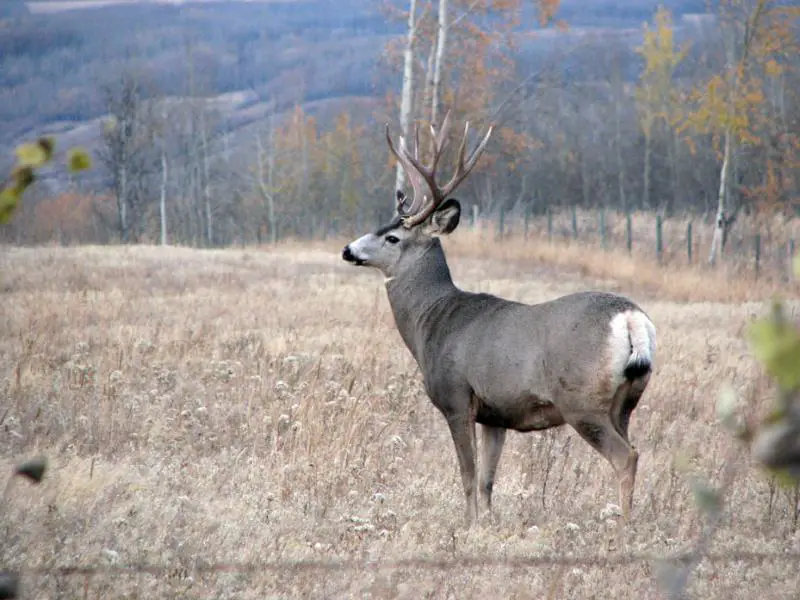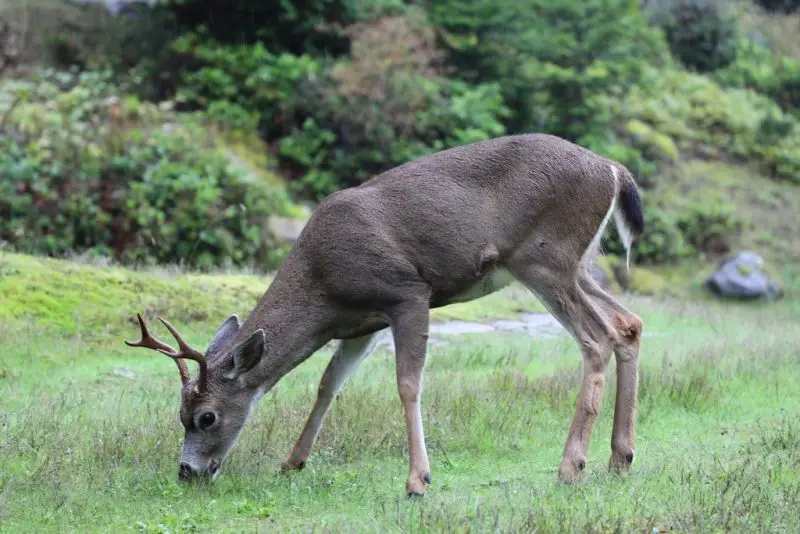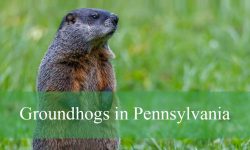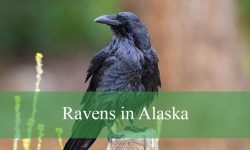Oregon has a wide variety of landscapes including rugged mountains and dense forests that provide perfect homes for several deer species. Observing these animals gives a fascinating insight into the state’s wildlife.
The three main species found in Oregon are Mule Deer, Black-tailed Deer, and White-tailed Deer. Each species has unique features, behaviors, and habitats, making identification both interesting and rewarding.
Knowing their characteristics, seasonal movements, and preferred environments can improve wildlife watching experiences and help ensure safe and respectful encounters with these graceful animals.
Different Types of Deer Found in Oregon
Mule Deer (Odocoileus hemionus)

Mule Deer are the most widespread and recognizable deer species in Oregon. Adult males, or bucks, can weigh between 150–300 pounds, while females, or does, typically weigh 100–200 pounds. Their large, mule-like ears, dark-tipped tails, and distinctive forked antlers make them easy to identify. Mule Deer have a tan to light brown coat in summer, which darkens during the winter months for better camouflage in forested and mountainous areas.
Mule Deer are highly adaptable and can thrive in a variety of habitats, including open grasslands, shrublands, and forest edges. They are especially common in the eastern parts of Oregon, where sagebrush and juniper cover the landscape, but they also inhabit agricultural areas where crops provide an abundant food source.
These deer are crepuscular, meaning they are most active at dawn and dusk. They feed on a wide range of vegetation, including grasses, shrubs, leaves, and twigs. During winter, they may move to lower elevations to find food, forming small herds for safety. Bucks shed and regrow their antlers annually, with the largest antlers often seen on older males in prime habitats.
Mule Deer are also a popular species for wildlife observation and hunting in Oregon. Areas like the Blue Mountains, Wallowa County, and high desert regions in central Oregon provide excellent opportunities to see them. Fun fact: Mule Deer get their name from their ears, which are proportionally larger than those of most other deer species, helping them detect predators in open terrain.
Black-tailed Deer (Odocoileus hemionus columbianus)

Black-tailed Deer are a subspecies of Mule Deer found primarily in western Oregon, especially along the coastal forests and the dense coniferous regions of the Cascades. They are slightly smaller than typical Mule Deer, with bucks weighing around 150–250 pounds and does around 90–150 pounds. Their most noticeable feature is the dark, almost black tail, which contrasts with the lighter color of the rest of their body.
These deer prefer dense forests and coastal habitats, where they can find abundant cover and browse. They are commonly seen in Douglas-fir, western hemlock, and Sitka spruce forests. Their diet consists mainly of shrubs, leaves, berries, and young shoots, which are plentiful in these temperate rainforests. Black-tailed Deer are also known to forage near rivers and streams, feeding on riparian vegetation.
Black-tailed Deer are generally shy and secretive, using the thick understory to hide from predators such as cougars and coyotes. They are most active during early morning and late afternoon. During the breeding season, known as the rut, males compete for mates using displays of antler size and physical strength. Bucks usually have smaller and less complex antlers than eastern Mule Deer, but they still play a critical role in reproduction.
Oregon’s coastal regions, including the Oregon Coast Range and Siuslaw National Forest, are excellent places to observe Black-tailed Deer. They are known to adapt well to suburban and park environments as well. Fun fact: Black-tailed Deer are highly agile and can leap over obstacles up to 8 feet high, which helps them escape predators in forested terrain.
White-tailed Deer (Odocoileus virginianus)

White-tailed Deer are less common in Oregon compared to Mule and Black-tailed Deer, but they are found primarily in the eastern and southeastern parts of the state. Adult bucks can weigh 150–300 pounds, while does weigh 90–200 pounds. Their signature feature is the white underside of the tail, which they raise as a warning signal when threatened. Their reddish-brown summer coat changes to grayish-brown in the winter, blending well with forests and farmlands.
White-tailed Deer prefer mixed woodlands, riparian corridors, and areas near farmland, where food sources are plentiful. They are highly adaptable, grazing on leaves, twigs, fruits, and nuts. In agricultural areas, they are known to feed on crops such as alfalfa, corn, and soybeans, which can sometimes bring them into conflict with humans.
These deer are very alert and cautious, often using their strong sense of smell and hearing to detect predators. They are primarily crepuscular but may feed during the day in areas with minimal human disturbance. Bucks grow and shed antlers annually, using them for dominance displays during the rut, which typically occurs in late autumn.
Good locations to observe White-tailed Deer in Oregon include the Umatilla National Forest, Grande Ronde Valley, and agricultural regions in the eastern counties. Fun fact: Unlike Mule Deer, White-tailed Deer have antlers that typically branch forward from a single main beam, which is a helpful identification feature when comparing the two species.
Comparison of Deer Species in Oregon
Feature |
Mule Deer (Odocoileus hemionus) |
Black-tailed Deer (Odocoileus hemionus columbianus) |
White-tailed Deer (Odocoileus virginianus) |
|---|---|---|---|
Average Size |
Bucks: 150–300 lbs; Does: 100–200 lbs |
Bucks: 150–250 lbs; Does: 90–150 lbs |
Bucks: 150–300 lbs; Does: 90–200 lbs |
Tail |
Black-tipped, moderately long |
Dark/black tail, smaller and bushier than Mule Deer |
White underside, raised when alarmed |
Antlers |
Forked; large and branched |
Forked; smaller and less complex than Mule Deer |
Single main beam with forward-pointing tines |
Coat Color |
Tan to light brown in summer; darker in winter |
Tan to brown with darker tail; blends with forest understory |
Reddish-brown in summer; grayish-brown in winter |
Habitat |
Open grasslands, shrublands, forest edges, agricultural areas |
Dense forests, coastal and riparian zones, understory vegetation |
Mixed woodlands, riparian corridors, farmland, forest edges |
Behavior |
Crepuscular; forms small herds in winter; migrates to lower elevations |
Shy and secretive; uses dense cover; crepuscular; rut in fall |
Alert and cautious; crepuscular; may feed during day in quiet areas; rut in late autumn |
Diet |
Grasses, shrubs, leaves, twigs |
Shrubs, leaves, berries, young shoots |
Leaves, twigs, fruits, nuts, crops in agricultural areas |
Best Observation Locations in Oregon |
Blue Mountains, Wallowa County, central high desert |
Oregon Coast Range, Siuslaw National Forest, coastal forests |
Umatilla National Forest, Grande Ronde Valley, eastern agricultural counties |
Fun Fact |
Named for their large mule-like ears, which help detect predators |
Can leap over obstacles up to 8 feet high to escape predators |
Antler branching is different from Mule Deer; tines project forward along main beam |
Best Time and Places to Observe Deer in Oregon
Mule Deer: The best time to observe Mule Deer is during early morning or late afternoon, especially in the fall and winter months when they move to lower elevations. Prime locations include the Blue Mountains, Wallowa County, and the high desert regions of central Oregon. During the rut in late autumn, bucks are more active and visible, increasing your chances of sightings.
Black-tailed Deer: Black-tailed Deer are most active at dawn and dusk, often staying hidden during the day in dense forests. Oregon Coast Range, Siuslaw National Forest, and coastal forest areas provide ideal viewing opportunities. Winter months are particularly good because deer often feed in more open areas when snow covers the forest floor.
White-tailed Deer: White-tailed Deer are best observed in early morning or late evening, especially during the fall rut. Key locations include Umatilla National Forest, Grande Ronde Valley, and agricultural regions in eastern Oregon. In quieter farmlands and forest edges, they may also be active during the day, offering additional viewing chances.
Fun tip: Using binoculars and keeping a safe distance will increase your chances of spotting deer without disturbing their natural behavior.
FAQs About Deer in Oregon
What types of deer are found in Oregon?
Oregon is home to three main deer species: Mule Deer, Black-tailed Deer, and White-tailed Deer. Mule Deer are widespread across the state, Black-tailed Deer are mostly found in western coastal forests, and White-tailed Deer are less common, primarily in eastern Oregon.
How can I tell Mule Deer and White-tailed Deer apart?
Mule Deer have large, mule-like ears and forked antlers, while White-tailed Deer have smaller ears and antlers with a single main beam with forward-pointing tines. Their tails also differ: Mule Deer have a black-tipped tail, while White-tailed Deer display a white underside that they raise when alarmed.
When is the best time to observe deer in Oregon?
The optimal times are early morning and late afternoon, particularly during the fall rut. Winter can also be a good season for sightings, as deer may move to lower elevations in search of food.
Where are the best places to see deer in Oregon?
Mule Deer: Blue Mountains, Wallowa County, and central high desert regions.
Black-tailed Deer: Oregon Coast Range, Siuslaw National Forest, and coastal forests.
White-tailed Deer: Umatilla National Forest, Grande Ronde Valley, and eastern agricultural counties.
What do Oregon deer eat?
Mule and Black-tailed Deer mainly feed on grasses, shrubs, leaves, and twigs, while White-tailed Deer also consume fruits, nuts, and crops in farmland areas. Their diet varies with the season and habitat.
Are deer dangerous to humans?
Deer are generally not aggressive, but during the rut, bucks can display territorial behavior. It’s best to observe from a safe distance and avoid approaching them, especially during the breeding season.
Can deer be seen in suburban areas of Oregon?
Yes, Mule Deer and Black-tailed Deer sometimes venture into suburban parks and neighborhoods, especially where natural cover and food sources like gardens and ornamental shrubs are available.







Loved the article. Lots of good info. I enjoy reading about nature and learning about how to enjoy it. Thank you from a senior citizen. I have had deer in my yard since moving in in May. Have been able to get some pictures.
Thank you so much for your kind words! I’m really glad you enjoyed the article. That sounds wonderful to have deer visiting your yard—it must feel like living close to nature every day. I’m sure your pictures are beautiful, and it’s so special that you get to experience wildlife right at home.